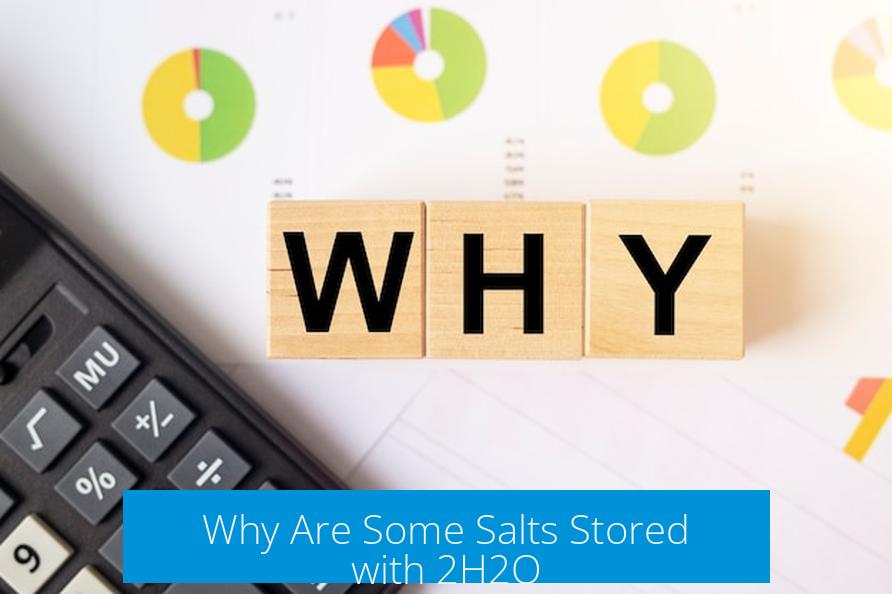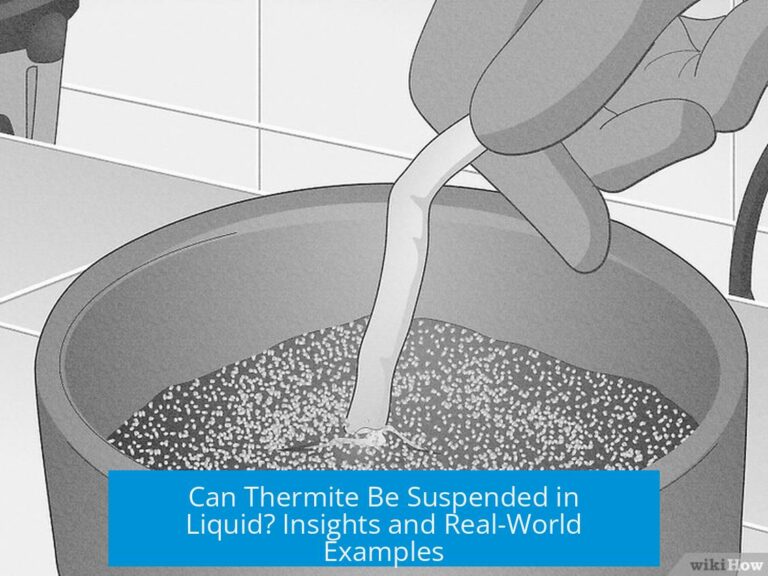Why Are Some Salts Stored with 2H2O?

Some salts are stored with 2H2O because the water molecules are integral to their crystal structure, forming a stable dihydrate that influences their physical and chemical properties. These two water molecules are not simply impurities but part of the compound’s lattice. Such water of crystallization impacts the compounds’ stability, handling, storage, and usage.
Water of Crystallization: The Core Concept
Certain salts crystallize containing water molecules within their structure. This water is known as the water of crystallization or hydration. It forms a part of the solid’s framework rather than just being absorbed moisture.
- Each formula unit of the salt binds with a fixed number of water molecules; in the case of dihydrates, two H2O molecules are present per unit.
- Barium chloride dihydrate, for example, includes exactly two water molecules integrated into its crystal lattice.
- The water participates in the ionic network, stabilizing the whole crystal.
This means that the hydrated salt is chemically distinct from its anhydrous form. The presence of water is consistent and essential, not an occasional or external factor.
Hygroscopic Nature and Hydrate Formation

Many salts are hygroscopic—they absorb moisture from the air. Hygroscopic salts form hydrates by incorporating water molecules into their solid matrix when exposed to normal atmospheric conditions.
- Calcium chloride (CaCl2) is so hygroscopic that it almost always forms hydrates under regular storage conditions.
- Magnesium chloride (MgCl2) often retains water, appearing as a liquid or slurry if attempted to be stored dry.
- Manufacturers may supply anhydrous salts, but exposure even to minimal humidity leads to hydration.
These conditions mean researchers must choose between hydrated and anhydrous forms based on stability and ease of handling.
Stability and Storage Implications
Hydrated salts tend to be more stable than their anhydrous counterparts in typical room conditions.
- The water molecules hold the crystal structure firmly, preventing it from collapsing into amorphous powders.
- Anhydrous salts can be reactive or chemically unstable; magnesium sulfate, for instance, reacts aggressively with water but its hydrated form (Epsom salt) does not.
- Drying salts to anhydrous states often requires high energy and special equipment, increasing cost and risk of decomposition.
- Hydrated salts tolerate open storage better, lowering complexity for labs and industries.
This practicality often guides storage choices, balancing reactivity, cost, and convenience.
Effect on Chemical Calculations and Use
The presence of water influences the molar mass and concentration calculations critical in chemical work.
- For example, magnesium sulfate heptahydrate contains seven water molecules adding 126 grams per mole to the formula weight.
- Incorrectly assuming a salt is anhydrous leads to errors in weighing and stoichiometric ratios.
- Precise accounting of water content is needed for consistent reactions and experimental reproducibility.
Knowing the exact hydration state ensures accurate dosing in laboratory and industrial settings.
Chemical and Structural Interactions of Hydrates
The water molecules are coordinated to the metal ions in salt crystals through specific bonding interactions rather than simple ionic bonding.
- Hydrated salts often form coordination complexes with metal ions such as Ca2+ or Mg2+.
- Oxygen atoms from water molecules donate lone pairs of electrons to empty orbitals on metal ions, forming dative bonds.
- This coordination creates a linked, stable network within the solid, integrating water firmly but distinct from covalent H–O bonds.
- The structure is not just ionic crystal packing but a hybrid network involving coordination chemistry principles.
This bonding arrangement helps explain why these water molecules are stable and essential parts of the salt’s identity.
Lab and Industry Considerations
Many chemical labs handle both anhydrous and hydrated salts depending on application.
- Hydrated salts dissolve faster due to pre-existing water molecules facilitating solvation.
- Purchasing hydrated forms often reduces expense versus buying dry salts, as dehydration and maintaining dryness add costs.
- Hydrated salts offer safer handling when anhydrous forms would react violently with atmospheric moisture or water.
- Storing hydrated salts simplifies logistics, yet labs may dehydrate them on demand if anhydrous forms are essential.
Thus, the form affects cost, safety, and procedural flexibility in chemical manufacturing and research.
Summary of Key Points
- Salts with 2H2O contain water molecules integral to their crystal lattice, called water of crystallization.
- Hydrated salts are often more stable and easier to handle than anhydrous forms under normal conditions.
- Water content must be considered in chemical formulations due to its impact on molar mass.
- Water participates in coordination bonds with metal ions, stabilizing the crystal structure.
- Hydrates are economically and practically preferred in many labs and industries.
- Hygroscopic salts naturally form hydrates by absorbing atmospheric moisture.
Why do some salts have 2H2O attached in their crystal structure?
These two water molecules are part of the salt’s crystal lattice itself. They are called water of crystallization, physically trapped in the solid, not just mixed or added later.
How does the water in these salts affect their stability?
The water makes the crystal more stable and prevents it from turning into a powder. Without it, the salt can become amorphous and less useful for storage or handling.
Why store salts as dihydrates instead of anhydrous forms?
Hydrated salts are often cheaper and easier to store. Anhydrous salts absorb moisture quickly or react strongly with water, making storage complicated and expensive.
What role does the water content play in chemical measurements?
Water changes the molecular weight of salts. Knowing how much water is present is crucial to weighing the correct amount and achieving accurate chemical results.
Are the water molecules chemically bonded to the salt ions?
Yes, water molecules form coordination complexes with ions via dative bonds. Oxygen donates electron pairs to metal ions, linking water tightly to the salt structure.
Does the hydrate form affect how salts behave in practical uses?
Hydrates often dissolve faster and are less reactive than anhydrous salts. This stability helps in labs and industry by reducing risks of aggressive reactions with moisture.





Leave a Comment